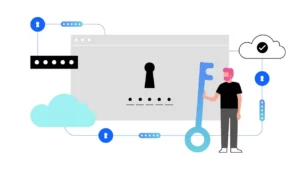
Open-source artificial intelligence (AI) refers to AI technologies where the source code is freely available for anyone to use, modify and distribute. When AI algorithms, pre-trained models, and data sets are available for public use and experimentation, creative AI applications emerge as a community of volunteer enthusiasts builds upon existing work and accelerates the development of practical AI solutions. As a result, these technologies quite often lead to the best tools to handle complex challenges across many enterprise use cases.
Open-source AI projects and libraries, freely available on platforms like GitHub, fuel digital innovation in industries like healthcare, finance and education. Readily available frameworks and tools empower developers by saving time and allowing them to focus on creating bespoke solutions to meet specific project requirements. Leveraging existing libraries and tools, small teams of developers can build valuable applications for diverse platforms like Microsoft Windows, Linux, iOS and Android.
The diversity and accessibility of open-source AI allow for a broad set of beneficial use cases, like real-time fraud protection, medical image analysis, personalized recommendations and customized learning. This availability makes open-source projects and AI models popular with developers, researchers and organizations. By using open-source AI, organizations effectively gain access to a large, diverse community of developers who constantly contribute to the ongoing development and improvement of AI tools. This collaborative environment fosters transparency and continuous improvement, leading to feature-rich, reliable and modular tools. Additionally, the vendor neutrality of open-source AI ensures organizations aren’t tied to a specific vendor.
While open-source AI offers enticing possibilities, its free accessibility poses risks that organizations must navigate carefully. Delving into custom AI development without well-defined goals and objectives can lead to misaligned results, wasted resources and project failure. Further, biased algorithms can produce unusable outcomes and perpetuate harmful assumptions. The readily available nature of open-source AI also raises security concerns; malicious actors could leverage the same tools to manipulate outcomes or create harmful content.
Biased training data can lead to discriminatory outcomes, while data drift can render models ineffective and labeling errors can lead to unreliable models. Enterprises may expose their stakeholders to risk when they use technologies that they didn’t build in-house. These issues highlight the need for careful consideration and responsible implementation of open-source AI.
As of this writing, tech giants are divided in opinion on the topic (this link resides outside of IBM). Through the AI Alliance, companies like Meta and IBM advocate for open-source AI, emphasizing open scientific exchange and innovation. In contrast, Google, Microsoft and OpenAI favor a closed approach, citing concerns about the safety and misuse of AI. Governments like the U.S. and EU are exploring ways to balance innovation with security and ethical concerns.
The transformative power of open-source AI
Despite the risks, open-source AI continues to grow in popularity. Many developers are choosing open-source AI frameworks over proprietary APIs and software. According to the 2023 State of Open Source report (this link resides outside of IBM), a notable 80% of survey respondents reported increased use of open-source software over the past year, with 41% indicating a “significant” increase.
As open-source AI becomes more widely used among developers and researchers, primarily due to investments by tech giants, organizations stand to reap the rewards and gain access to transformative AI technologies.
In healthcare, IBM Watson Health uses TensorFlow for medical image analysis, enhanced diagnostic procedures and more personalized medicine. J.P. Morgan’s Athena uses Python-based open-source AI to innovate risk management. Amazon integrates open-source AI to refine its recommendation systems, streamline warehouse operations and enhance Alexa AI. Similarly, online educational platforms like Coursera and edX use open-source AI to personalize learning experiences, tailor content recommendations and automate grading systems.
Not to mention the numerous applications and media services, including companies like Netflix and Spotify, that merge open-source AI with proprietary solutions, employing machine learning libraries like TensorFlow or PyTorch to enhance recommendations and boost performance.
Five open-source AI tools to know
The following open-source AI frameworks offer innovation, foster collaboration and provide learning opportunities across various disciplines. They are more than tools; each entrusts users, from the novice to the expert, with the ability to harness the massive potential of AI.
- TensorFlow is a flexible, extensible learning framework that supports programming languages like Python and Javascript. TensorFlow allows programmers to construct and deploy machine learning models across various platforms and devices. Its robust community support and extensive library of pre-built models and tools streamline the development process, making it easier for beginners and experienced practitioners to innovate and experiment with AI.
- PyTorch is an open-source AI framework offering an intuitive interface that enables easier debugging and a more flexible approach to building deep learning models. Its strong integration with Python libraries and support for GPU acceleration ensures efficient model training and experimentation. It is a popular choice among researchers and developers for rapid software development prototyping and AI and deep learning research.
- Keras, an open-source neural network library written in Python, is known for its user-friendliness and modularity, allowing for easy and fast prototyping of deep learning models. It stands out for its high-level API, which is intuitive for beginners while remaining flexible and powerful for advanced users, making it a popular choice for educational purposes and complex deep-learning tasks.
- Scikit-learn is a powerful open-source Python library for machine learning and predictive data analysis. Providing scalable supervised and unsupervised learning algorithms, it has been instrumental in the AI systems of major companies like J.P. Morgan and Spotify. Its simple setup, reusable components and large, active community make it accessible and efficient for data mining and analysis across various contexts.
- OpenCV is a library of programming functions with comprehensive computer vision capabilities, real-time performance, large community and platform compatibility, making it an ideal choice for organizations seeking to automate tasks, analyze visual data and build innovative solutions. Its scalability allows it to grow with organizational needs, making it suitable for startups and large enterprises.
The surging popularity of open-source AI tools, from frameworks like TensorFlow, Apache, and PyTorch; to community platforms like Hugging Face, reflects a growing recognition that open-source collaboration is the future of AI development. Participation in these communities and collaboration on the tools helps organizations get access to the best tools and talent.
The future of open-source AI
Open-source AI reimagines how enterprise organizations scale and transform. As the technology’s influence extends across industries, inspiring widespread adoption and a deeper application of AI capabilities, here’s what organizations can look forward to as open-source AI continues to drive innovation.
Advancements in natural language processing (NLP), tools like Hugging Face Transformers and large language models (LLMs) and computer vision libraries like OpenCV will unlock more complex and nuanced applications, like more sophisticated chatbots, advanced image recognition systems and even robotics and automation technologies.
Projects like Open Assistant, the open-source chat-based AI assistant, and GPT Engineer, a generative AI tool that allows users to create applications from text prompts, foreshadow the future of ubiquitous, highly personalized AI assistants capable of handling intricate tasks. This shift towards interactive, user-friendly AI solutions suggests a deeper integration of AI into our daily lives.
While open-source AI is an exciting technological development with many future applications, currently it requires careful navigation and a solid partnership for an enterprise to adopt AI solutions successfully. Open-source models often fall short of state-of-the-art models and require substantial fine-tuning to reach the level of effectiveness, trust and safety needed for enterprise use. While open-source AI offers accessibility, organizations still require significant investments in compute resources, data infrastructure, networking, security, software tools, and expertise to utilize them effectively.
Many organizations need bespoke AI solutions that current open-source AI tools and frameworks can only provide a shadow of. While evaluating open-source AIs’ impact on organizations worldwide, consider how your business can take advantage; explore how IBM offers the experience and expertise needed to build and deploy a reliable, enterprise-grade AI solution.
earn more about how to train, validate, tune and deploy AI modelsIBM Newsletters
Get our newsletters and topic updates that deliver the latest thought leadership and insights on emerging trends.Subscribe now More newsletters
- SEO Powered Content & PR Distribution. Get Amplified Today.
- PlatoData.Network Vertical Generative Ai. Empower Yourself. Access Here.
- PlatoAiStream. Web3 Intelligence. Knowledge Amplified. Access Here.
- PlatoESG. Carbon, CleanTech, Energy, Environment, Solar, Waste Management. Access Here.
- PlatoHealth. Biotech and Clinical Trials Intelligence. Access Here.
- Source: https://www.ibm.com/blog/five-open-source-ai-tools-to-know/
- :has
- :is
- :where
- ][p
- 1
- 11
- 2023
- 22
- 24
- 28
- 29
- 300
- 39
- 400
- 7
- 75
- 8
- 9
- 90
- a
- ability
- About
- accelerate
- accelerates
- acceleration
- access
- accessibility
- accessible
- According
- Achieve
- across
- active
- actors
- add
- Additionally
- adopt
- Adoption
- advanced
- advancements
- ADvantage
- Advertising
- advocate
- AI
- AI assistant
- AI models
- AI systems
- Alexa
- algorithms
- All
- Alliance
- allow
- Allowing
- allows
- also
- always
- Amazon
- among
- amp
- an
- analysis
- analytics
- analyze
- and
- android
- Announcements
- anyone
- Apache
- api
- APIs
- Application
- applications
- approach
- architecture
- ARE
- article
- artificial
- artificial intelligence
- Artificial intelligence (AI)
- AS
- Assistant
- assistants
- assumptions
- author
- automate
- Automation
- automotive
- automotive industry
- availability
- available
- back
- Balance
- BE
- becomes
- been
- Beginners
- behind
- beneficial
- bespoke
- BEST
- between
- biased
- Blog
- blogs
- Blue
- boost
- Breaking
- Bringing
- broad
- build
- Building
- builds
- business
- businesses
- but
- button
- by
- CAGR
- CAN
- capabilities
- capable
- carbon
- card
- Cards
- careful
- carefully
- cases
- CAT
- Category
- CEOs
- challenges
- Channel
- chatbots
- check
- choice
- choosing
- circles
- CIS
- citing
- class
- closed
- code
- collaboration
- collaborative
- color
- Communities
- community
- Companies
- compatibility
- complex
- components
- comprehensive
- Compute
- computer
- Computer Vision
- Concerns
- Consider
- consideration
- constantly
- construct
- Consumers
- Container
- content
- contexts
- continue
- continues
- continuous
- continuously
- contrast
- contribute
- Core
- could
- Coursera
- covering
- create
- Creating
- Creative
- CSS
- Current
- Currently
- custom
- customer
- customer expectations
- customer experience
- Customer Service
- Customers
- customized
- daily
- data
- data analysis
- data infrastructure
- data integration
- data mining
- data sets
- Date
- December
- deep
- deep learning
- deeper
- Default
- definitions
- Degree
- deliver
- Demand
- deploy
- description
- developers
- Development
- Devices
- diagnostic
- different
- digital
- digital innovation
- disciplines
- distribute
- diverse
- Diversity
- do
- down
- drive
- driven
- due
- each
- easier
- easy
- Education
- educational
- edx
- Effective
- effectively
- effectiveness
- efficient
- emerge
- emerging
- emphasizing
- employing
- empower
- enable
- enables
- engineer
- enhance
- enhanced
- ensure
- ensures
- Enter
- Enterprise
- enterprise-grade
- enterprises
- enthusiasts
- enticing
- entirely
- Environment
- episode
- Errors
- especially
- Ether (ETH)
- ethical
- EU
- evaluating
- Even
- Every
- evolution
- excellent
- exchange
- exciting
- existing
- Exit
- expect
- expectations
- expected
- experience
- experienced
- Experiences
- experiment
- expert
- expertise
- explore
- Exploring
- extends
- extensive
- fabric
- Face
- fact
- Failure
- Fall
- false
- FAST
- favor
- Features
- Featuring
- feeding
- feel
- finance
- five
- flexible
- Focus
- follow
- following
- fonts
- For
- For Startups
- Forward
- forward-thinking
- Foster
- fosters
- Foundation
- Foundations
- Framework
- frameworks
- fraud
- Free
- freely
- from
- Fuel
- full
- functionality
- functions
- further
- future
- Future of AI
- Gain
- generative
- Generative AI
- generator
- get
- giants
- GitHub
- Global
- Goals
- governance
- Governments
- GPU
- greatest
- Grid
- Grow
- Growing
- Growth
- handle
- Handling
- harmful
- harness
- Have
- Heading
- Health
- healthcare
- height
- helps
- high-level
- Highlight
- highly
- How
- How To
- HTTPS
- IBM
- ibm quantum
- IBM Watson
- ICO
- ICON
- ideal
- image
- image analysis
- Image Recognition
- Impact
- implementation
- implementations
- improvement
- in
- Including
- Increase
- increased
- increasing
- index
- indicating
- industries
- industry
- influence
- Infrastructure
- innovate
- Innovation
- innovative
- insights
- inspiring
- instrumental
- integral
- Integrates
- integration
- Intelligence
- interactive
- Interface
- into
- intricate
- intuitive
- Investments
- iOS
- issues
- IT
- ITS
- J.P. Morgan
- JavaScript
- jpg
- Know
- known
- labeling
- language
- Languages
- large
- large community
- Large enterprises
- latest
- lead
- leader
- Leadership
- leading
- Leap
- learning
- Level
- Leverage
- leveraging
- libraries
- Library
- like
- LINK
- linux
- Lives
- local
- locale
- Look
- machine
- machine learning
- magic
- major
- make
- MAKES
- Making
- manage
- management
- many
- Market
- massive
- max-width
- May..
- Media
- medical
- medicine
- Meet
- mention
- Merge
- Meta
- Microsoft
- Microsoft Windows
- min
- Mining
- minutes
- misuse
- ML
- Mobile
- model
- models
- modify
- modular
- more
- Morgan
- must
- Named
- Natural
- Natural Language
- Natural Language Processing
- Nature
- Navigate
- Navigation
- nearly
- Need
- needed
- needs
- Netflix
- network
- networking
- Neural
- neural network
- neutrality
- New
- New Features
- New technologies
- news
- Newsletters
- next
- nlp
- no
- notable
- nothing
- novice
- now
- numerous
- objectives
- of
- off
- offer
- offered
- offering
- Offers
- often
- on
- ongoing
- online
- only
- open
- open source
- Open-source Software
- OpenAI
- OpenCV
- opensource
- Operations
- opportunities
- optimized
- or
- organizational
- organizations
- Other
- our
- out
- outcomes
- outside
- over
- page
- participation
- Partnership
- past
- performance
- personalize
- Personalized
- phone
- PHP
- piece
- platform
- Platforms
- plato
- Plato Data Intelligence
- PlatoData
- Plugged
- plugin
- policy
- Popular
- popular choice
- popularity
- poses
- position
- possibilities
- Post
- potential
- power
- powerful
- Practical
- predictive
- primarily
- primary
- procedures
- process
- processing
- produce
- Programmers
- Programming
- programming languages
- project
- projects
- prompts
- proprietary
- protection
- prototyping
- provide
- providing
- public
- published
- purposes
- Python
- pytorch
- Quantum
- question
- Questions
- quite
- raises
- rapid
- RE
- reach
- readily
- Reading
- real-time
- reap
- recognition
- Recommendation
- recommendations
- refers
- refine
- reflects
- reimagines
- reliable
- remaining
- report
- Reported
- require
- Requirements
- requires
- research
- researchers
- Resources
- respondents
- responsible
- responsive
- result
- Results
- reusable
- Rewards
- Risk
- risk management
- risks
- robotics
- robots
- robust
- s
- Safety
- same
- saving
- Scalability
- scalable
- Scale
- scale ai
- scientific
- Screen
- scripts
- secure
- security
- see
- Seek
- seeking
- Self-service
- seo
- Series
- service
- Services
- set
- Sets
- setup
- Shadow
- shift
- Short
- significant
- silos
- Similarly
- Simple
- site
- SIX
- small
- smart
- Software
- software development
- solid
- solution
- Solutions
- Solving
- some
- sophisticated
- Source
- source code
- specific
- Sponsored
- Spotify
- squares
- Staff
- stakeholders
- stand
- stands
- start
- Startups
- State
- state-of-the-art
- stay
- Still
- streamline
- strong
- subscribe
- substantial
- Successfully
- Suggests
- suitable
- support
- Supports
- sure
- surging
- Survey
- SVG
- system
- Systems
- Take
- Talent
- tasks
- teams
- tech
- tech giants
- technological
- Technologies
- Technology
- tensorflow
- tertiary
- text
- than
- thanks
- that
- The
- The Future
- The Source
- the world
- their
- Them
- theme
- There.
- These
- they
- this
- thought
- thought leadership
- Through
- Tied
- Tim
- time
- Title
- to
- today’s
- together
- tool
- tools
- top
- topic
- Topics
- towards
- Train
- Training
- Transform
- transformative
- transformers
- Transparency
- Trends
- Trust
- two
- type
- u.s.
- ubiquitous
- unlock
- unsupervised learning
- Updates
- upon
- URL
- use
- used
- user-friendly
- users
- uses
- using
- utilize
- VALIDATE
- Valuable
- value
- various
- vehicle
- Vehicles
- vendor
- Video
- vision
- visual
- volunteer
- W
- Warehouse
- Warehouse Operations
- wasted
- Watson
- ways
- we
- web
- well-defined
- What
- when
- which
- while
- WHO
- widely
- widespread
- will
- windows
- with
- without
- WordPress
- Work
- world
- worldwide
- writing
- written
- year
- you
- Your
- youtube
- zephyrnet
















